Honeysuckle variety Malvina
Malvina - medium early honeysuckle. Received in St. Petersburg at the Pavlovsk experimental station VIR im. N.I. Vavilov through hybridization of the elite form No. 21-5 from the Primorsky Territory with the Leningradsky Giant variety. The authors of the variety are M.N. Plekhanov and A.V. Kondrikov.
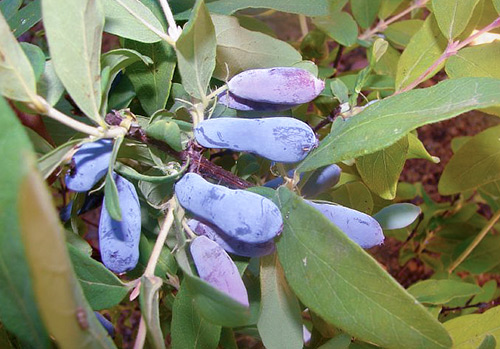
Since 2002, the variety has been zoned in all regions of the Russian Federation.
The bushes are vigorous (more than 1.5 m in height), the crown is dense, squat, oval in shape. Skeletal branches are rather thin, dark brown in color. Shoots are straight, thin, slightly pubescent, light green. The leaves are dense, large in size, elongated-oval in shape with a pointed tip, dark green in color. The leaf blade is straight, with a rounded base.
Malvina honeysuckle berries are large (average weight of 1 fruit - 1.1 grams, length - up to 2.9 cm, diameter - 1.2 cm), with a slightly hilly surface, without pubescence, elongated pear-shaped with an elongated base and an uneven roller tops. The skin is dense, bluish-blue in color, with an intense waxy bloom.
The pulp is fibrous, slightly aromatic, with a pleasant sweet and sour taste, dessert type. Tasting taste assessment - 4.4 points. In terms of chemical composition, berries grown in the conditions of northwestern Russia contain: dry matter (14.6%), the amount of sugars (8.0%), acids (1.9%), vitamin C (52 mg / 100 g ). A variety for universal use.
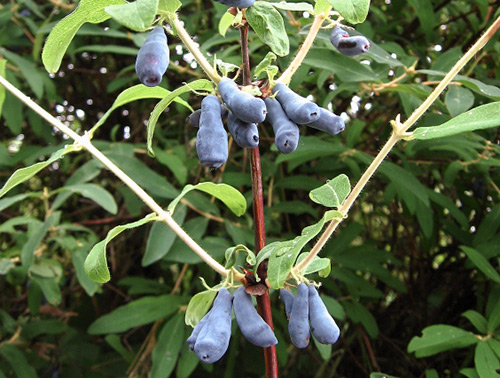
In the conditions of Moscow, the fruits of this honeysuckle ripen 5 - 7 days later than varieties of Moscow selection (June 12 - 16). Ripe berries remain on the bushes for a long time, practically without crumbling. The separation of fruits from the stalks is difficult.
Malvina's honeysuckle is high-yielding (1.6 - 3.2 kg / bush, or an average of 48.9 c / ha), highly winter-resistant and fast-growing. It is not affected by diseases and pests.
The variety is self-fertile. The following varieties are used as pollinators: Blue spindle, Moraine, Kamchadalka, Blue bird, Start, Memory of Kuminov, as well as the Malvina variety itself.
This honeysuckle succeeds on many soils, but best of all on fertilized loamy soils. For planting bushes, open, sunny places are preferred. The decorative appearance of the shrubs allows the Malvina variety to be used in garden design.
The main advantages of Malvin's honeysuckle include: large-fruited, low crumbling and dessert taste of berries, high rates of early maturity and yield, resistance to low temperatures, diseases and pests.
No significant shortcomings, except for the difficult separation of the berries from the stalk, were found in the variety.
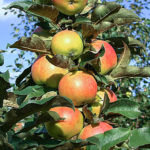
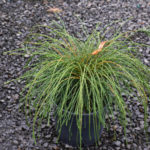
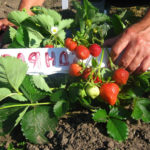
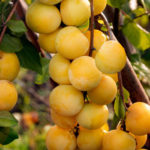

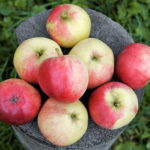



Although I am not a big fan of honeysuckle, I think that you should have at least a couple of bushes in your garden, because this is one of the earliest berries. I chose Malvina on the advice of her neighbors. They praised her for her productivity. I have been growing for the fourth year already. So far, there has been no big harvest, but we already managed to eat last year. Ripens in our numbers 20 - 25 June. Interesting taste, no bitterness, but with sugar I still like it better. I also like her unpretentiousness, you don't need to take special care. A little potash in the fall (I use ash), a little nitrogen in the spring. In addition, it grows in my partial shade. In the spring, a small pruning, that's all the care.